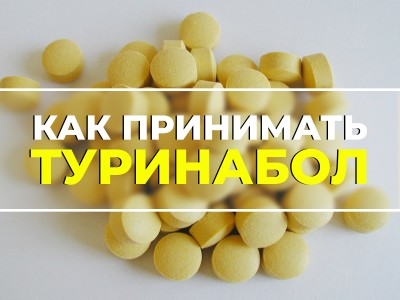Body Shredding
In this article, we will discuss the concept of “Body Shredding.” If you are reading this, it means you’ve decided to get your body in shape.
I want to immediately clarify that the principles outlined in this article apply to both men and women. However, they are not suitable for those who are looking for a “magic pill,” super-fast diets, or other gimmicks that don’t work.
To achieve results (and results are guaranteed), you need to "get off the couch" and put into practice everything that will be written below.
It won’t be easy. But you know that nothing worth having comes easy...
Body Shredding: Basic Concepts
The term "Body Shredding" is a slang term that originated in the world of professional bodybuilding and has since made its way into the vocabulary of fitness enthusiasts. "Body Shredding" refers to a specific regimen of diet and exercise aimed at reducing subcutaneous fat deposits while preserving as much muscle mass as possible. This process assumes you already have a good amount of muscle mass, discipline, and dedication.
Please do not confuse "body shredding" with "regular" weight loss and the desire to lose a few pounds.
The result of a proper, well-conducted "shredding" should be a beautiful, defined, and well-sculpted musculature, a flat stomach, and other desired physical features. In essence, everything you’ve always dreamed of but didn’t know how to achieve with your first shredding attempt.
The Misconceptions of Quick Diets
I’m sure many of you have tried “going on a diet” at least once in your life.
And how did that go? Did you lose the weight you wanted?
I highly doubt it. And do you know why?
The word “Diet” in the minds of most people is almost synonymous with starvation.
And it’s no wonder, because the foundation of so-called “quick and popular diets” that promise a loss of 10 kg in a week usually involves severe restrictions on food intake, leading to a significant reduction in calories entering the body.
What Happens During a Strict Diet?
Calories from food are the energy your body uses to maintain its vital functions. When you go on a strict diet, the calories needed for the body’s normal functioning stop coming in sufficient quantities. Consequently, the body switches to internal energy reserves, and you start losing weight.
But don’t celebrate just yet; you’re not losing fat. What’s being consumed are the glycogen stores (quick energy reserves) from your liver and muscles. Along with glycogen, water is also lost. So, in the first few days of such a diet, you’re simply losing weight, not fat. A few more days of this diet, and the weight loss process slows down and then stops altogether.
When you get frustrated and revert to your previous eating habits, the weight will return to its original levels. After some time, you might even notice an extra couple of kilograms added as fat.
Why Does This Happen?
Evolution has equipped the human body with a mechanism that allowed our distant ancestors to survive during times of famine. The body learned to create long-term energy reserves in the form of fat deposits. These reserves (fat) are the body’s favorite and most cherished resource.
When you start under-eating by drastically cutting calories, it is a stress signal to the body, indicating that "hard times" have arrived, posing a threat to life in the form of starvation.
The first thing the body does is "get rid" of the most energy-intensive "assets" – active muscle mass (skeletal muscles), as maintaining them requires a lot of energy. The body slows down metabolism and tries to store even more fat from every meal to ensure survival during the "famine."
Reversing such a diet doesn’t just bring your weight back to its original state. Considering the effect of super-compensation and the slowed-down metabolism, you’ll gain more fat than you had before the diet.
Important Note
This article primarily targets men and women who already have a sufficient amount of muscle mass and are considering shredding as a holistic approach involving strength training, diet, and the use of sports pharmacology and other supplements that can significantly speed up the fat-burning and "body shredding" process.
Even if you don’t go to the gym and don’t engage in sports, by following the principles of a proper diet for weight loss mentioned below, you can lose weight quickly and safely, primarily by shedding fat mass at home.
However, note that weight loss without strength training will result in the loss of both fat and active muscle mass, which isn’t ideal for those who want a toned appearance.
Benefits of Strength Training for Men and Women During Shredding
Using strength training in addition to a proper diet helps you:
-
Speed up the fat-burning process several times over
-
Achieve a beautiful, toned, and sexy body
-
Minimize muscle loss during weight loss
Proper Body Shredding for Women
Many women fear strength training, believing that working out with weights will make them look masculine, unattractive, and unsexy.
Ladies, remember this once and for all:
No woman in the world is capable of building muscle mass to the extent of being large, unattractive, and overly muscular.
You simply don’t produce enough of the hormones responsible for muscle growth, particularly testosterone, which is present in your body in much lower amounts compared to men.
What About Female Bodybuilding?
The women you see in female bodybuilding who have significantly muscular physiques use anabolic steroids – synthetic analogs of the male sex hormone testosterone. Hormonally, they are like "super-men," with testosterone levels much higher than those of an average man.
So, don’t worry about becoming overly muscular. Instead, you’ll become toned and firm, with a rounded, attractive butt. In short, you’ll look sexy. So, head to the gym, build some muscle, and then shred!
Body Shredding: Diet for Proper Weight Loss
A well-structured diet should create metabolic conditions that allow you to avoid or minimize muscle loss while promoting fat burning. To burn fat and not muscle during the shredding process, our primary goal is to maintain a high metabolic rate.
How to Maintain and Boost Metabolism During Shredding
To maximize your metabolic rate, you need two things:
-
Fractional nutrition (eat 6-12 times a day)
-
Strength training to increase energy expenditure and prevent muscle loss
Basic Principle of Shredding and Weight Loss
You need to burn more calories (energy) than you consume daily.
How Many Calories Do You Need for Shredding? Basal Metabolism
In dietetics, there is a concept known as Basal Metabolism or Basal Metabolic Rate (BMR). Basal metabolism is the amount of energy required to maintain the body’s vital functions at rest.
How to Calculate Basal Metabolic Rate?
There are several formulas for calculating basal metabolism. The most accurate one currently is the Mifflin-St Jeor formula:
-
For men: 10 x weight (kg) + 6.25 x height (cm) - 5 x age + 5
-
For women: 10 x weight (kg) + 6.25 x height (cm) - 5 x age - 161
How to Count Calories for Shredding
To know how many calories you consume in your daily menu, you need to weigh the products you eat (or plan to eat throughout the day).
General Principles of a Shredding Diet
A diet, in the proper sense of the word, primarily means adhering to a feeding schedule, not starving, as is commonly believed.
Main Principles of a Shredding Diet:
-
Fractional Nutrition 5-6 Times a Day
-
It is crucial not to overdo it with calories when eating fractionally. Therefore, you should prepare food for the entire next day and plan your menu in advance.
-
-
Eat at Regular Intervals
-
Eat every 2-3 hours. It is incorrect to stop eating after 6 PM. Instead, avoid consuming carbohydrates after 6 PM and focus on proteins. Avoid eating 2 hours before bedtime.
-
-
Increase Protein Intake
-
Consume at least 2 grams of protein per kilogram of body weight. Carbohydrates should be 2-3 grams per kilogram of body weight. Eat every 2-3 hours.
-
-
Avoid Simple Carbohydrates
-
Stay away from sugar, baked goods, pastries, alcohol, sweet sodas, juices, potatoes, and sweet fruits.
-
-
Use Only Complex Carbohydrates
-
Whole grains, pasta made from durum wheat, whole-grain bread, and raw vegetables are preferred.
-
Example Diet for a 110 kg Athlete
Below is an example of my diet at the beginning of shredding, considering daily caloric intake and my feeding schedule:
-
5:00 AM : Protein shake – 23g protein – 120 kcal
-
5:30 AM : 100g oatmeal (or any whole grain cereal) with 400ml 0.5% milk, half a scoop of protein in the oatmeal, and 100g chicken breast (or grilled fish) – 667 kcal, 25g protein, ~90g carbs.
-
7:30 AM : 100g buckwheat (or pasta, rice) with 100g grilled chicken breast – 70g carbs, 20g protein – 430 kcal
-
8:40 AM : BCAA
-
9:00 AM : High-intensity training for 40 min + 20 min cardio – protein shake immediately after workout – 120 kcal, 23g protein
-
10:00 AM : 100g buckwheat (or pasta, rice) with 100g
grilled chicken breast – 70g carbs, 20g protein – 430 kcal
-
1:00 PM : 100g buckwheat (or pasta, rice) with 100g grilled chicken breast – 70g carbs, 20g protein – 430 kcal
-
4:00 PM : 200g fish (or chicken breast) – ~40g protein – 226 kcal + vegetables
-
7:00 PM : 150g low-fat cottage cheese – 25g protein – 122 kcal
-
10:00 PM : BCAA – bedtime
Total for the day: 2545 kcal. Approximate deficit: 300 kcal + additional expenditure from training. Protein: ~200g, carbohydrates: 300g.
Drink Plenty of Water
Drink at least 2-3 liters of water during the shredding process. If you don’t drink enough water, you won’t be able to maintain high metabolic processes. Your fat-burning process will slow down or stop altogether.
Avoid High-Glycemic Index Foods
High-GI foods cause a sharp increase in blood sugar levels, leading to a rapid insulin release, which then stores excess glucose as fat.
Cooking Methods
Avoid frying foods in oil. Instead, bake, boil, or steam your food. Invest in a slow cooker or kitchen grill for healthier cooking.
Training for Definition and Fat Burning
Strength training is the most effective way to burn calories.
-
Heavy Basic Training
-
For minimal muscle loss, use heavy compound exercises.
-
Train your whole body in each session.
-
Example Training Schedule
Initially, perform heavy training three times a week, training the entire body in each session. After the third week, switch to supersets combining compound and isolation exercises with minimal rest between sets.
Supplements for Shredding
Steroids like Turinabol, Stanozolol, and Oxandrolone can indirectly enhance fat burning by preventing muscle loss, allowing for greater calorie expenditure.
Monitoring Progress
To track your progress:
-
Take photos from different angles before starting the diet and every three weeks thereafter.
-
Measure your body (chest, waist, hips, etc.) every two weeks.
-
Weigh yourself once a week in the morning on an empty stomach.
Duration of Shredding
My shredding lasts three to four months, enough to achieve excellent results and enjoy them throughout the summer.
Conclusion
Consistency in effort is crucial to achieving results. By applying the principles outlined in this article for 2-3 months, you will see significant improvements.
Best of luck, strong willpower, and intense motivation!





